|
|
PUEBLO CRISIS /
Operation Red Fox
(College
Cadence deployment) |
|
|
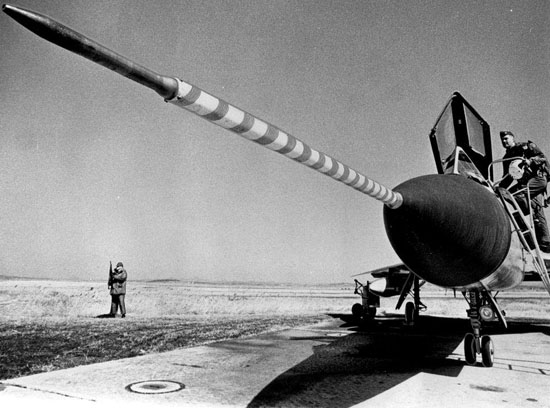 |
|
|
Operation Combat Fox – The USAF Response
By John A. Okonski /
51st Fighter Wing Historian |
|
|
|
At approximately 1345 hours on 23 January 1968 (Korea Time), North
Korean patrol boats seized the USS Pueblo, a US Navy
intelligence-gathering vessel, in international waters of the East Sea
near Wonsan, North Korea. One USS Pueblo crewmember was killed in the
boarding, with 82 taken POW, and later held captive for 11 months.
|
|
|
|
The seizure took place two days after a North Korean commando team
attempted to assassinate Republic of Korea President Park Chung Hee in
Seoul. These incidents only highlighted ongoing provocations by the
North over the previous several years which had been known as the
"Second Korean War."
|
|
|
|
The USS Pueblo seizure shocked the Free World with strong public
sentiment in the US calling for firm retaliatory action against North
Korea. However, the US was deeply involved in the South Vietnam conflict
which required enormous amounts of military assets. Yet, the seizure
served as a catalyst to strengthen US commitment to South Korea over the
following months.
|
|
|
|
Once word was received by the civilian and military leadership in
Washington DC that the USS Pueblo was boarded and seized by the NK
forces, they immediately weighed their options in attempting a rescue
and recovery of the crew and ship. Outright military action was
considered, but deemed too risky. Complicating the situation was the
beginning of the Battle of Khe Sanh in South Vietnam followed by the Tet
Offensive at the end of the month. Concerned that military action would
put the crew at risk, President Lyndon B. Johnson began a diplomatic
campaign to free the men through the United Nations Security Council.
However, he also ordered a buildup of USAF forces on the Peninsula on 26
January to include activation of Air National Guard (ANG) units.
|
|
|
|
When the USS Pueblo was taken, USAF combat forces on the Peninsula
were limited to rotation of fighters to Osan and Kunsan ABs from bases
in Japan. The fighters had been on special alert, and would not have
provided immediate air coverage.
|
|
|
|
|
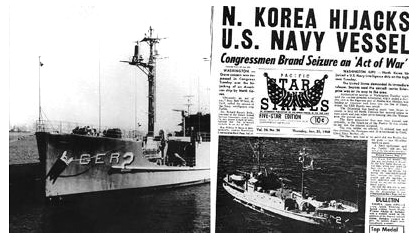 |
|
|
|
|
|
Within 2 hours after the USS Pueblo seizure, the Fifth Air Force
commander, who was located at Fuchu AS, Japan, and had overall
responsibility for operations for USAF activities on the Korean
Peninsula, ordered the 18th Tactical Fighter Wing's (TFW) 12th Tactical
Fighter Squadron (TFS) with 34 F-105s to deploy from Kadena AB, Okinawa,
to Osan AB, and the 475 TFW's 356 TFS with 14 F-4Cs to deploy from
Misawa AB, Japan, to Kunsan AB. While partial deployment of both units
occurred late on 23 January, the remainder of these elements arrived in
South Korea on 29 January. The 51st Fighter Interceptor Wing's 82d
Fighter Interceptor Squadron (FIS), based at Naha AB, Okinawa, also was
tasked to deploy to South Korea. The squadron arrived at Suwon AB on 30
January with 22 F-102s. A fourth PACAF unit-- the 12 TFW's 558 TFS,
based at Cam Ranh Bay, South Vietnam--further was tasked to deploy, and
arrived at Kunsan AB with 14 RF-4Cs on 4 February, and then moved to
Taegu AB on 10 March.
|
|
|
|
Once the National Command Authorities decided upon a course of
action, the Joint Chiefs of Staff (JCS) ordered a buildup of USAF forces
in South Korea on 26 January while directing three naval carrier groups
which had been dedicated to the conflict in South Vietnam to take
stations off the coast of South Korea.
|
|
|
|
The USAF response to the USS Pueblo crisis was dubbed Operation
COMBAT FOX. It became a two-phase operation with initial deployment by
active duty units followed by Air Reserve (AFR) and Air National Guard
(ANG) units. Initial deployment of more than 180 combat aircraft to
South Korea and Okinawa came from units within PACAF, Tactical Air
Command (TAC), Strategic Air Command (SAC) and Aerospace Defense Command
(ADC).
|
|
|
|
The following TAC units deployed to South Korea: the 4 TFW, based
at Seymour-Johnson AFB, North Carolina, deployed with three combat
squadrons (334 TFS, 335 TFS, and 336 TFS) and 72 F-4Ds to Kunsan AB
between 31 January and 4 February; the 363d Tactical Reconnaissance
Wing's 19th Tactical Electronic Warfare Squadron, from Shaw AFB, South
Carolina, deployed with six EB-66s to Osan AB on 3 February. The
squadron, however, moved to Taegu AB on 12 February to make room for the
4537th Electronic Warfare Squadron, Nellis AFB, Nevada, and its six
specially-configured F-105 Wild Weasel aircraft which deployed to Osan
AB by 4 February.
|
|
|
|
The JCS also directed that SAC deploy a squadron each of B-52s and
KC-135As to Kadena AB. Strategic Air Command's 91st Bombardment Wing,
Glasgow AFB, Montana, deployed its 322d Strategic Reconnaissance
Squadron and 907th Air Refueling Squadron with 15 B-52Gs and 10 KC-135As
to Kadena AB in early February.
|
|
|
|
|
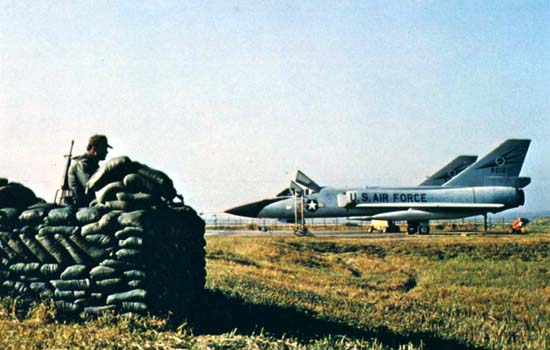 |
|
|
|
|
|
Of note, ADC's 318 FIS, flying F-106s based at McChord AFB,
Washington, deployed on 11 February with stops at Hickam AFB, Hawaii,
and Naha AB, Okinawa. The squadron landed at Osan AB on 18 February.,
and was the first ADC unit ever to deploy overseas.
|
|
|
|
Aside from combat units being deployed, civil engineering Prime
BEEF teams made up of personnel in the Continental United States (CONUS)
rushed to South Korea to provide immediate facilities construction and
support. Concurrently, HQ USAF activated the 557th Civil Engineering
Squadron (Heavy Repair) (RED HORSE) in February 1968, quickly manned it
with personnel from CONUS units, and provided them with special
construction and weapons training before deployment to Osan AB by 24
March 1968. The 400-man squadron then sent detachments to four other
bases (Suwon, Kunsan, Taegu, and Kwangju) to augment the PRIME BEEF
teams in construction of facilities and quarters for approximately 8,000
TDY personnel.
|
|
|
|
To ensure that the deployment of combat and support units was
accomplished safely and efficiently, HQ PACAF's 315th Air Division,
based at Tachikawa AB, Japan, directed airlift operations for the
contingency. Aside from its C-130 fleet, the division was augmented by
the C-130-equipped 38th Tactical Airlift Squadron (TAS), Langley AFB,
Virginia, and 779 TAS, Pope AFB, North Carolina for intra-theater
airlift.
|
|
|
|
Military Airlift Command (MAC) supported the massive airlift
operation of personnel and equipment with C-124s, C-133s, and C-141s at
Osan, Kimpo, and Kunsan ABs. During the first three weeks of Operation
COMBAT FOX, MAC aircraft moved 7,861 passengers and nearly 12,800 tons
of cargo in 836 missions to Korea and Japan.
|
|
|
|
By the summer of 1968, most of the deployed units returned to
their home bases as other active duty, AFR, and ANG units arrived in
South Korea. When President Johnson approved the initial deployment on
26 January, he also signed mobilization orders for 12 ANG units of which
two--the 127 TFS and 166 TFS--later deployed with F-100Cs to Kunsan AB
in July 1968. Additionally, a number of AFR and ANG personnel deployed
to each base to serve in base support activities.
|
|
|
|
As the USAF established its forces on the Korean Peninsula,
negotiations between the United Nations Military Armistice Commission
and North Korea continued at Panmunjom through the year. Eleven months
after the seizure, North Korea repatriated the USS Pueblo crew and one
set of remains to the US through Panmunjom on 23 December 1968. The ship
remained in the Wonson Harbor, North Korea (The ship later was
transported to Pyongyang in 1999). It is the only active duty USN ship
to be held in captivity by a hostile foreign power. Operation COMBAT FOX
wound down by early 1969 after the release of the crew; however,
rotational deployments of combat units to South Korea continued
indefinitely.
|
|
|
|
What seemed like a weak and indecisive response to the USS Pueblo
seizure, in reality, was a signal to North Korea that US military forces
would be brought to bear against any designs to invade the Republic of
Korea. Headquarters Fifth Air Force had been aware of the Pueblo
mission, but it had not been a part of any contingency planning; yet, it
still responded almost immediately to deter any further provocations by
North Korea. The crisis further engendered a renewed commitment by the
US to strengthen not only the USAF on the Peninsula, but also those of
the ROK Air Force. The USAF fighter deployments continued after
Operation COMBAT FOX, and eventually led to the permanent basing of the
3 TFW at Kunsan AB on 15 March 1971.
|
|
|
|
|
|
318 FIS IN Operation Red Fox |
|
|
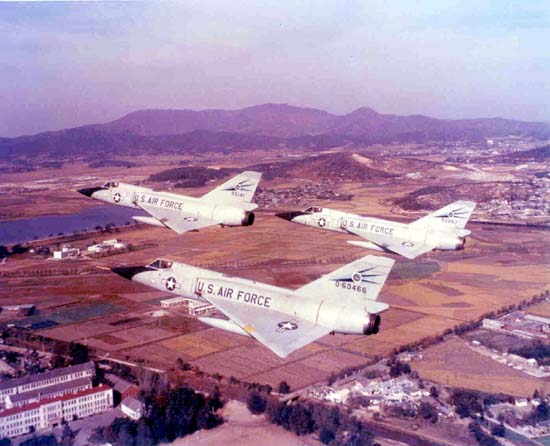 |
|
|
|
Darts Deploy to Korea !
|
|
McChord Defender / Thursday, March 21,
1968
|
|
|
|
Overseas deployment to Osan Air Base Korea, by F-106 Delta
Darts of the 318th Fighter interceptor Squadron was announced this week
by Lt Gen. Arthur G. Agan, Commander, Aerospace defense Command (ADC).
|
|
|
|
The McChord based supersonic jet aircraft according to
officials, scored a first when they flew to the critical area along with
tactical air units. Using in-flight refueling, the F-106s were flown to
Korea as a part of the Air Force's buildup triggered by the crises
perpetrated by North Korea.
|
|
|
|
The move, including more than 400 maintenance and support
personnel in addition to the aircraft, marks the first time the Dart has
operated in an overseas area. It is the only century series jet in the
USAF operational inventory that has not been tested under fire in
Southeast Asia.
|
|
|
|
Flight leader for the deployment was Lt. Col. Fredrick M.
O'Connor, 318th FIS Commander.
|
|
|
|
The Delta Darts rendezvoused with the giant KC-135
Stratotankers from the Strategic Air Command for refueling during the
6,686-mile flight.
|
|
|
|
The 318th was the first F-106 unit in ADC to develop this
refueling capability, which in effect gives them unlimited range.
|
|
|
|
The 62nd Military Airlift Wing from McChord airlifted a 400-man
element of maintenance, supply, and medical personnel for the 325th
Fighter Wing in the giant C-141 StarLifters to support the fighters.
They went complete with aircraft spare parts, specialized maintenance
equipment and everything else to keep the 1,400 mile-per-hour
interceptors in operation.
|
|
|
|
The General's statement was the first public announcement by
the ADC task force which played a vital role in the build-up.
|
|
|
|
Armed with supersonic air-to-air missiles, the Convair-built
fighters arrived at their destination prepared to assume a combat-ready
posture. The planes were immediately placed on alert to provide air
defense for other forces in the area.
|
|
|
|
The F-106 is an all-weather interceptor equipped with MA-1
electronic guidance and fire control systems. Under interceptor
conditions, this automatic control guides the aircraft to the attack to
locate and destroy other targets.
|
|
|
|
With its ability to fly long-range refueling missions while
carrying its full compliments of Falcon and Genie air-to-air weapons,
the F-106 is prepared at all times to engage enemy aircraft in battle.
|
|
|
|
Discharging the USAF responsibilities for aerospace defense of
the United States and providing for defense of overseas land areas as
required is the mission of the Aerospace Defense Command. ADC's 91,000
personnel are stationed at 480 different units around the globe.
|
|
|
|
|
|
318 FIS F-106's in Operation Red Fox |
|
|
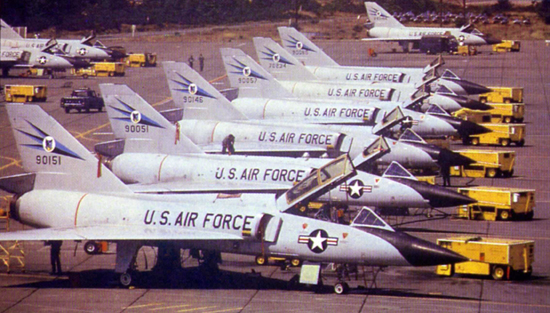 |
|
|
|
An already tenuous
situation for the US
in Southeast Asia became worse after the capture of the US
Navy's USS Pueblo and her crew by the North Korean military on 23
January 1968. With a great deal of the USAF’s tactical assets tied up in
the war in Southeast Asia, the F-106 was called upon to defend the
airspace over Korea. In a secretive movement ASSOCIADE,
On 9 February 1968,the 318th with
the assistance of C-141's from the 62d Military Airlift Wing at McChord,
deployed 18 F-106's and 400
personnel to Osan AB, on 9 February 1968 history’s first combat
deployment of an ADC F-106 Fighter-Interceptor Squadron. Below you will
find a list of the 18 F-106's deployed to defend the airspace above
Korea and the 6 aircraft that remained at McChord maintaining the
squadrons alert commitment at the Pacific Northwest.
|
|
|
|
At the end of their Red Fox (College
Cadence) rotation assignment, the 318th returned to McChord
without their aircraft, leaving their F-106's for the next unit, the 48th FIS.
At McChord, the 318th flew F-106's assigned to the 48th FIS until the end
of that squadrons rotation assignment in December of
1968.
|
|
|
|
Before their Korean deployment,
the 48th FIS was temporary assigned to McChord bolstering the cadre of
pilots & crew performing homestation alert duties of the 318 FIS. The
48th FIS performed their "Cadence" assignment between July and December
1968.
|
|
|
|
|
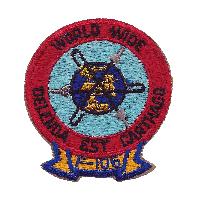 |
|
|
|
|
|
318TH KOREAN DEFENDERS |
|
56-0465 |
56-0466 |
57-0234 |
|
59-0051 |
59-0054 |
59-0057 |
|
59-0058 |
59-0059 |
59-0065 |
|
59-0110 |
59-0127 |
59-0141 |
|
59-0141 |
59-0143 |
59-0144 |
|
59-0146 |
59-0148 |
59-0151 |
|
|
|
|
|
318TH NORTHWEST DEFENDERS |
|
56-0457 |
56-0459 |
57-0243 |
|
59-0108 |
59-0145 |
59-0152 |
|
|
|
|
|
48TH "Tazlanglian Devil" loaners |
|
56-0453 |
56-0458 |
56-0462 |
|
57-0241 |
58-0792 |
59-0024 |
|
59-0112 |
59-0116 |
59-0122 |
|
59-0123 |
59-0126 |
59-0128 |
|
59-0130 |
59-0132 |
59-0133 |
|
59-0135 |
59-0136 |
59-0137 |
|
59-0157 |
|
59-0158 |
|
|
|
|
|
|
|
|
 |